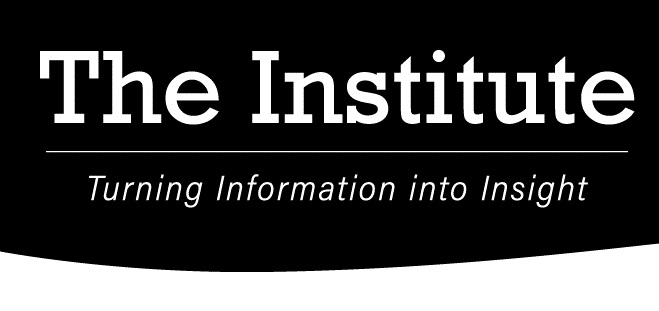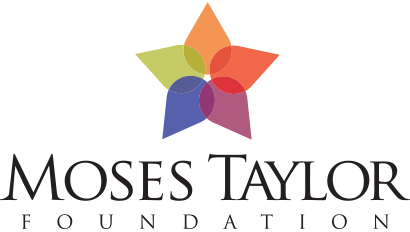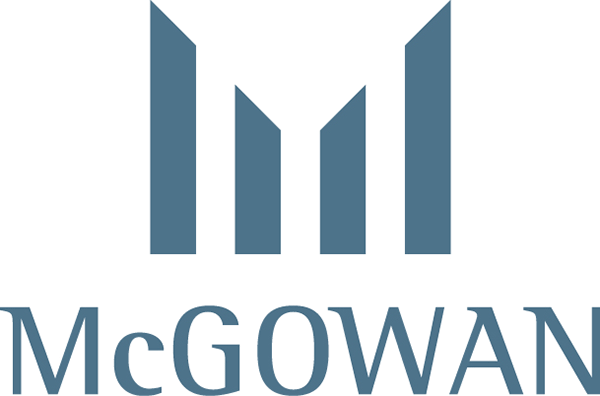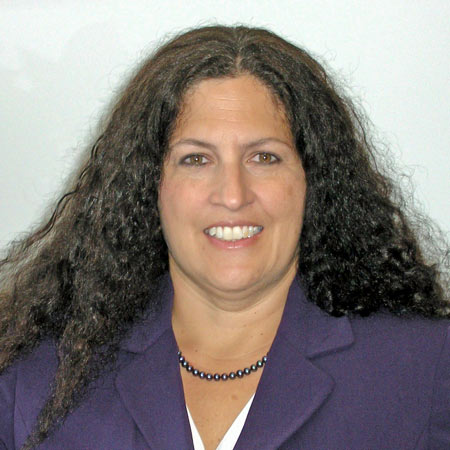Thank You
Thank you to the following organizations for their continued support of our research and this Data Dashboard, which is part of Project STIR (Sparking Transformation using Information & Research).
Economic Equity
The percentage of the population in the three-county region living below the poverty level is a significant indicator concerning promotion of social equity and economic growth. As of 2021 in Pennsylvania, 12 percent of the overall population fell below the poverty level. The highest poverty levels are for those who identify with Hispanic or Latino origin, of any race (25 percent), Black or African American (nearly 25 percent), American Indian and Alaska Native (21 percent), or Some Other Race (nearly percent).
In Lackawanna County, 14 percent of the population falls below the poverty level. Poverty is highest in Lackawanna County among those identifying as Black or African American (nearly 35 percent) and those who identify as Two or More Races (31 percent). In Luzerne and Wayne Counties, poverty is highest among the American Indian and Alaska Native population followed by the Black or African American population (36.5 percent).
Where data was available to analyze over time, there have been some signs of improvement, with declines in the poverty rates of African American and Hispanic individuals falling faster than the overall rate since 2010.
Seventy percent of all people working in the Scranton-Wilkes-Barre Metro Area earned at least $15 per hour in 2019. Only 45 percent of the Latino population, 48 percent of people of color, and 51 percent of the Asian or Pacific Islander population earned at least $15 per hour in 2019. Similar disparities are present across levels of education, though the gap narrows somewhat at higher levels of education. The female populations for those identifying as Latino, People of Color, or White all had a lower percentages of those earning at least $15 per hour than their male counterparts.
Additionally, those who identify as White have higher rates of employment in management occupations – ranging from nearly five percent to nearly six percent in the three counties. The share of Hispanic workers in these occupations ranges from nearly two percent to more than 2.5 percent, and the share among Black workers is 2.5 percent to more than three percent.
Poverty Rate
Data Source: US Census Bureau ACS 5-year Estimates
2010 %
2021 %
Wages
Source: National Equity Atlas
Share of Workers Earning at least $15/hour: Scranton-Wilkes-Barre Metro Area, 2019
Share of Workers Earning at least $15/hour by Race/Ethnicity and Gender: Scranton-Wilkes-Barre Metro Area, 2019
Share of Workers Earning at least $15/hour by Race/Ethnicity and Education: Scranton-Wilkes-Barre Metro Area, 2019
Percent of Workers in Management Occupations
Source: JobsEq – as of 2022 Q3
Education Equity
Access to equitable school opportunities and experiences, regardless of background, race, socioeconomic circumstances, gender, and ability, is essential to ensure that every student has the support and resources necessary to attain their educational goals. This access – or lack thereof – has consequences for other intersecting social equity indicators.
For 2021, slightly larger shares of women than men held at least a high school diploma and at least a bachelor’s degree in all three counties.
In all three counties, there was also a gap in educational attainment by race and ethnicity for both the high school and bachelor’s degree levels. In Lackawanna County, almost 31 percent of White non-Hispanic residents hold a bachelor’s degree or higher compared with 11 percent of Hispanic residents and 13 percent of Black residents. In Luzerne County, these shares were nearly 25.5 percent, nearly 13 percent, and nearly nine percent, respectively. In Wayne County, these rates were 20 percent, almost 19 percent, and almost two percent for White non-Hispanic, Hispanic, and Black residents respectively.
Percent of the Population Age 25+ by Education: Lackawanna County
Source: U.S. Census Bureau, ACS 5-year estimates
Percent of the Population Age 25+ by Education: Luzerne County
Source: U.S. Census Bureau, ACS 5-year estimates
Percent of the Population Age 25+ by Education: Wayne County
Source: U.S. Census Bureau, ACS 5-year estimates
Percent of the Population Age 25+ by Education: Pennsylvania
Source: U.S. Census Bureau, ACS 5-year estimates
Digital Equity
The Federal Communications Commission (FCC) reports a strong relationship between broadband access and health outcomes, referring to digital equity as a “super” determinant of health. Therefore, fostering digital equity is vital among communities.
The percentage of households with computer and broadband internet subscriptions for 2021 was tracked to better understand digital equity across the three-county region. In Pennsylvania overall, those identifying as Black or African American alone have the lowest rate of access (85.5 percent), followed by Hispanic or Latino of any race (88 percent). In Lackawanna County, those who identify as Black or African American alone had a slightly lower rate of access than other groups (at nearly 87 percent). In Luzerne County, those who identify as White alone, not Hispanic or Latino, had a slightly lower rate (at nearly 88 percent) than other groups, followed by Hispanic or Latino of any race (89 percent). In Wayne County, people who identify White alone, not Hispanic or Latino, have the lowest rate of access at 86 percent.
Digital equity statistics are likely correlated with other demographic differences present in counties, such as the age of the population. In all three counties, those who are aged 65 or older (approximately 70 percent to 75 percent) live in households with a computer, broadband, and internet subscription. Those with less than a high school diploma also have a lower rate of computer or broadband access in all three counties, ranging from 66 percent to 72 percent.
It should be noted that Internet speed and affordability are not factored into this metric.
Households with a Computer and Broadband Internet Subscription, 2021
Source: U.S. Census Bureau, ACS 5-year estimates
Health Risk Factors and Outcomes
The U.S. Department of Health and Human Services defines health equity as the “attainment of the highest level of health for all people.” Numerous inequities contribute to disparities in health risk factors and the health status of Pennsylvanians. The Centers for Disease Control and Prevention (CDC) has named “achieving health equity, eliminating disparities, and improving the health of all groups” a top priority.
Those who have less than a high school education face greater incidences of poor physical health, heart attack, heart disease or stroke, diabetes, and poor mental health than people with high school diplomas or higher. Although adults across all levels of education had similar rates of depressive disorder diagnoses, those with college educations had a slightly lower rate. Individuals without high school diplomas are also likelier than others to have low physical activity and use tobacco.
Those who identify as Black non-Hispanic and Hispanic have higher rates of reported poor physical health than those identifying as White non-Hispanic. They also have higher reported rates of diabetes and poorer mental health. However, those identifying as White have higher reported rates of heart attack and heart disease or stroke as well as higher rates of reported depressive disorders. Black individuals were likelier than others to report no leisure time physical activity.
Individuals who identify as lesbian, gay, or bisexual have a significantly higher rates of poor mental health and reported depressive disorders – 35 percent and 45 percent, respectively. They also have a higher rate of tobacco smoking – 21 percent compared to 15 percent.
Health Risk Factors, Pennsylvania Adults, 2021
Source: Pennsylvania BRFSS
Excludes missing, don’t know and refused.
*Defined as having five or more drinks on one occasion for men and having four or more drinks on one occasion for women
**Defined as adult men having more than two drinks per day and adult women having more than one drink per day
Health Status, Pennsylvania Adults, 2021
Source: Pennsylvania BRFSS
Excludes missing, don’t know and refused.
Health Insurance Equity
Health equity involves lessening or eliminating health disparities through increased access to resources and health care. It is also a matter of lessening or eliminating economic and social obstacles in the three-county region. Removing these disparities requires equitable access to health insurance coverage as well.
As of the most recent data available in 2021, Pennsylvania overall had a slightly lower percentage (over 5.5 percent) of those not covered by health insurance than was the case in 2016 (eight percent). In Pennsylvania, males have a slightly higher rate of uninsured (6.5 percent) compared to females (nearly five percent).
In Lackawanna County, those who identify as some other race alone and Native Hawaiian/Pacific Islander have higher uninsured rates than other races and ethnicities (21 percent and 21 percent, respectively). In Luzerne County, people identifying as Native Hawaiian/Pacific Islander and some other race alone have the highest uninsured rates (21 percent and 18 percent, respectively). In Wayne County, those identifying as Native Hawaiian/Pacific Islander and American Indian and Alaska Native have the highest rates of being uninsured (100 percent and nearly 49.5 percent, respectively).
Generally, uninsured rates declined between 2016 and 2021. However, several non-White groups saw less decline than White non-Hispanic residents.
Percent Not Covered by Health Insurance
Source: U.S. Census Bureau – ACS 5-year estimates
| Percent Not Covered by Health Insurance | Lackawanna 2016 | Lackawanna 2021 | Luzerne 2016 | Luzerne 2021 | Wayne 2016 | Wayne 2021 | PA 2016 | PA 2021 |
|---|---|---|---|---|---|---|---|---|
| Percent Uninsured | 6.7% | 4.6% | 7.6% | 5.8% | N/A | 6.8% | 8.0% | 5.6% |
| Gender | ||||||||
| Male | 8.1% | 5.8% | 8.7% | 7.4% | N/A | 7.7% | 9.1% | 6.5% |
| Female | 5.4% | 3.4% | 6.5% | 4.3% | N/A | 5.9% | 6.9% | 4.8% |
| Race & Ethnicity | ||||||||
| White alone, not Hispanic or Latino | 5.5% | 3.5% | 6.3% | 3.7% | N/A | 6.4% | 6.6% | 4.7% |
| Black or African American | 13.1% | 6.5% | 12.9% | 11.2% | N/A | 9.0% | 11.5% | 7.1% |
| American Indian and Alaska Native | 2.8% | 3.1% | 25.1% | 17.7% | N/A | 49.4% | 17.7% | 12.6% |
| Asian | 16.0% | 8.6% | 13.5% | 12.5% | N/A | 18.1% | 11.3% | 6.6% |
| Native Hawaiian/Pacific Islander | 50.0% | 20.1% | 0.0% | 21.3% | N/A | 100% | 10.0% | 12.4% |
| Some other race alone | 24.3% | 21.1% | 21.4% | 18.2% | N/A | 13.6% | 20.1% | 15.5% |
| Two or more races | 5.2% | 6.7% | 8.1% | 12.3% | N/A | 13.1% | 8.9% | 6.8% |
| Hispanic or Latino (of any race) | 19.1% | 12.0% | 16.9% | 16.3% | N/A | 8.9% | 17.4% | 12.3% |
| Place of Birth & Citizenship | ||||||||
| Native born | 5.7% | 3.8% | 6.5% | 4.5% | N/A | 6.5% | 7.1% | 5.0% |
| Foreign-born, naturalized citizen | 14.5% | 7.1% | 14.8% | 14.2% | N/A | 19.0% | 9.8% | 6.6% |
| Foreign-born, not a citizen | 35.7% | 25.4% | 32.9% | 26.7% | N/A | 1.4% | 31.0% | 22.2% |
| Disability Status | ||||||||
| With a disability | 4.1% | 2.4% | 4.7% | 3.3% | N/A | 1.8% | 5.1% | 3.4% |
| No disability | 7.2% | 5.0% | 8.1% | 6.3% | N/A | 7.9% | 8.4% | 6.0% |
| Educational Attainment | ||||||||
| Less than high school graduate | 14.3% | 11.4% | 13.7% | 14.2% | N/A | 7.4% | 16.8% | 14.1% |
| High school graduate or equivalent | 8.8% | 6.1% | 9.2% | 5.6% | N/A | 7.0% | 9.7% | 6.5% |
| Some college or associate's degree | 7.9% | 4.5% | 7.2% | 5.9% | N/A | 7.9% | 8.3% | 5.2% |
| Bachelor's degree or higher | 3.2% | 2.6% | 4.1% | 3.2% | N/A | 2.3% | 3.7% | 2.6% |
| Household Income | ||||||||
| Under $25,000 | 9.5% | 6.0% | 12.3% | 7.3% | N/A | 9.1% | 12.6% | 7.7% |
| $25,000 to $49,999 | 10.7% | 7.1% | 10.6% | 7.2% | N/A | 8.8% | 12.1% | 8.4% |
| $50,000 to $74,999 | 6.5% | 4.7% | 7.3% | 7.8% | N/A | 7.6% | 8.3% | 7.3% |
| $75,000 to $99,999 | 3.8% | 5.6% | 4.1% | 5.7% | N/A | 4.9% | 5.8% | 5.2% |
| $100,000 and over | 2.8% | 2.2% | 2.9% | 3.4% | N/A | 5.0% | 3.6% | 3.4% |
Health Risk Factors, Pennsylvania Adults, 2021
Source: Pennsylvania BRFSS
Excludes missing, don’t know and refused.
*Defined as having five or more drinks on one occasion for men and having four or more drinks on one occasion for women
**Defined as adult men having more than two drinks per day and adult women having more than one drink per day
Trauma and Resilience
According to the CDC, Adverse Childhood Experiences (ACEs) are events or circumstances that may be traumatic to children during the first 18 years of life. Examples of ACEs are experiencing violence, abuse, neglect, intimate partner violence, living with family members with mental health or substance abuse problems, and parental incarceration. Mitigating these experiences and improving equity by linking community members to the resources they need will, in turn, foster resilience.
Across Pennsylvania in 2021, 22 percent of residents lived with someone who was depressed, mentally ill, or suicidal before they were age 18. One-quarter lived with someone who was a problem drinker or alcoholic before they reached age 18. Thirteen percent, before age 18, lived with someone who used illegal street drugs or abused prescriptions. Nine percent, before age 18, lived with someone who was sentenced to serve time in prison.
Those identifying as lesbian, gay, bisexual, Black non-Hispanic, or Hispanic were likelier than others to have Adverse Childhood Experiences. This includes 51 percent of lesbian, gay, and bisexual adults who lived with someone depressed, mentally ill, or suicidal before age 18 compared with 22 percent overall. It also includes 35 percent of those with very low incomes who lived with a problem drinker before age 18 compared to 25 percent overall. The percentages who had lived with someone sentenced to prison was 20 percent and 18 percent among Black non-Hispanic and Hispanic adults (respectively) compared to just seven percent for White non-Hispanic adults.
Intimate partner violence was also most common among lesbian, gay, and bisexual adults, as well as women, younger adults, and those with incomes under $15,000 per year.
Percent Not Covered by Health Insurance
Source: U.S. Census Bureau – ACS 5-year estimates
Before Age 18, Lived with Anyone Who:
| Was depressed, mentally ill or suicidal | Was a problem drinker or alcoholic | Used illegal drugs or abused prescriptions | Was sentenced to serve time in prison | Ever had sex without their consent after indicating they didn't want them to | Ever hit, slapped, pushed, kicked or hurt by an intimate partner | |
|---|---|---|---|---|---|---|
| All adults | 22 | 25 | 13 | 9 | 7 | 13 |
| Male | 20 | 22 | 13 | 9 | 4 | 11 |
| Female | 25 | 28 | 13 | 10 | 10 | 15 |
| Age | ||||||
| 18-29 | 37 | 27 | 18 | 16 | 13 | 15 |
| 30-44 | 30 | 27 | 20 | 14 | 9 | 20 |
| 45-64 | 19 | 27 | 13 | 7 | 6 | 12 |
| 65+ | 10 | 21 | 4 | 3 | 4 | 6 |
| Education | ||||||
| < High school | 20 | 33 | 21 | 15 | 7 | 15 |
| High school | 22 | 28 | 15 | 11 | 6 | 13 |
| Some college | 24 | 26 | 13 | 9 | 8 | 14 |
| College degree | 22 | 19 | 10 | 5 | 7 | 11 |
| Household Income | ||||||
| < $15,000 | 22 | 35 | 21 | 15 | 12 | 21 |
| $15,000 to $24,999 | 25 | 32 | 16 | 14 | 9 | 14 |
| $25,000 to $49,999 | 25 | 28 | 16 | 13 | 9 | 15 |
| $50,000 to $74,999 | 21 | 22 | 11 | 7 | 10 | 14 |
| $75,000 + | 23 | 24 | 12 | 5 | 6 | 11 |
| Race | ||||||
| White, non-Hispanic | 22 | 25 | 12 | 7 | 7 | 12 |
| Black, non-Hispanic | 26 | 29 | 20 | 20 | 10 | 17 |
| Sexual orientation | ||||||
| Lesbian, gay, or bisexual | 51 | 34 | 23 | 18 | 28 | 25 |
| Straight | 20 | 24 | 12 | 8 | 6 | 12 |
Housing Equity
Data on housing cost burden demonstrates that in 2019, White households had the lowest housing burden among renters (40 percent), and Latino households had the highest housing burden (52 percent). Also in 2019, White households living below 200 percent of the federal poverty level had the lowest housing burden for renters (67 percent), and Latino households had the highest (71 percent). In that year, women of color were likelier to be cost burdened – 61 percent, compared with 45 percent of White women and 32 percent of White men.
Inequities are also present in homeownership rates. In each county and statewide, African Americans had a far lower rate of homeownership compared with White non-Hispanic households. In Luzerne and Wayne Counties, Asian households had comparable or higher rates of homeownership, but in Lackawanna County the homeownership rate among Asians was lower than average. In Wayne County, where homeownership rates are higher overall, gaps between racial groups in homeownership appeared less drastic.
Homeownership Rate by Race and Ethnicity
Data Source: US Census Bureau ACS 5-year Estimates
Hate Crime
An offense committed with motivation based on bias constitutes a hate crime. In Pennsylvania, a hate crime is defined as “a criminal act motivated by ill will or hatred toward a victim’s race, color, religion, or national origin.” At the federal level, hate crime laws include “crimes committed on the basis of a victim’s perceived or actual race, color, religion, national origin, sexual orientation, gender, gender identity, or disability.”
Hate crimes increased in Lackawanna and Luzerne Counties from 2021 to 2022. In 2021, there were four reported hate crimes in Lackawanna County. That number rose to nine in 2022. In 2021, there was one reported hate crime in Luzerne County. That number rose to three in 2022. The number in Wayne County remains unchanged, with one report in 2021 and one report in 2022. There was a decrease in reported hate crimes statewide, with 287 reported in 2022, but this number remains higher than levels seen several years ago.
Between 2018 and 2022, the majority of hate crimes in the three-county region were motivated by race, ethnicity, or ancestry (50 percent), followed by disability (20 percent), religion (15 percent), and sexual orientation (10 percent). Compared to the statewide distribution, the region had a larger share of hate crimes motivated by disability, including four of the nine statewide during that time.
Hate Crime Reports
Source: Pennsylvania Uniform Crime Reporting System
| County | 2018 | 2019 | 2020 | 2021 | 2022 |
|---|---|---|---|---|---|
| Lackawanna County | 0 | 1 | 0 | 4 | 9 |
| Luzerne County | 0 | 0 | 0 | 1 | 3 |
| Wayne County | 0 | 0 | 0 | 1 | 1 |
| Pennsylvania | 91 | 83 | 112 | 347 | 287 |
2018-2022 Hate Crime Reports by Bias Motivation
Source: Pennsylvania Uniform Crime Reporting System
| Bias Motivation | 3-County Region | Pennsylvania | ||
|---|---|---|---|---|
| Race/Ethnicity/Ancestry | 10 | 50% | 636 | 69% |
| Religion | 3 | 15% | 134 | 15% |
| Sexual Orientation | 2 | 10% | 125 | 14% |
| Disability | 4 | 20% | 9 | 1% |
| Gender | 0 | 0% | 3 | 0% |
| Gender Nonconforming | 1 | 5% | 13 | 1% |
Disability Equity
Males and females across the three-county region have similar rates of disability. All three counties have higher rates than Pennsylvania’s rate overall. In Lackawanna County, those identifying as Black or African American alone have a higher disability rate (22 percent) than other races and ethnicities. Those identifying as Two or more races in Luzerne County have the highest disability rate (18 percent). In Wayne County, those identifying as American Indian and Alaska Native alone (47 percent) have the highest reported disability rate, followed by individuals identifying as Black or African American alone (29 percent). Across all of Pennsylvania, people identifying as American Indian and Alaska Native alone (19.5 percent) have the highest rate of reported disability, followed by people identify as Some other race alone (18 percent) and Black or African American alone (nearly 17 percent).
Percent of the Population with a Disability: 2021
Source: U.S. Census Bureau, ACS 5-year estimates
LGBTQIA+ Equity
Promoting social equity in both the public and private sectors can be advanced by first understanding a variety of indicators across the LGBTQIA+ population. As of 2022, four percent of adults in Pennsylvania identify as LGBTQ+ and they represent five percent of the workforce. Twenty-seven percent of the LGBTQIA+ population aged 25 and over are raising children.
The most recent statewide LGBTQIA+ health needs assessment found that those who identify as LGBTQIA+ have a higher rate of unemployment and a higher rate of being uninsured than people who identify as heterosexual and cisgender. Additionally, people in the LGBTQIA+ community have a significantly higher rate of food insecurity and a higher rate of income below $24,000. Respondents also noted various barriers to care for their physical health. These barriers include the fear of a negative reaction to their LGBTQIA+ identity, lack of proximity to LGBTQIA+ affirming health providers, insurance that does not cover LGBTQ-affirming physical health care, and others, such as cost. Furthermore, 38.5 percent noted barriers to seeking mental health care.
With regard to self-reported lifetime experiences, a significant majority (nearly 62.5 percent) have experienced discrimination based on LGBTQIA+ status, over 50.5 percent contemplated suicide, and 48 percent have had thoughts of self-harm.
While just over half of those identifying as LGBTQIA+ in Pennsylvania often or always feel respected for their LGBTQIA+ identity (almost 56 percent), nearly 30 percent only feel respected sometimes, and 14.5 percent never or rarely feel respected. The majority self-reported that they often (nearly 33 percent) or sometimes (36 percent) receive the social and emotional support they need (rather than those who always receive such support – 10 percent).
Statewide LGBTQIA+ Community
Source: Movement Advancement Project | State Profiles (lgbtmap.org)
| Population | Percentage |
|---|---|
| Percent of adults (18+) who are LGBTQIA+ | 4.10% |
| Total LGBTQIA+ population (13+) | 490,000 |
| Percent of workforce that is LGBTQIA+ | 5% |
| Total LGBTQIA+ workers | 307,000 |
| Percent of LGBTQIA+ adults (25+) raising children | 27% |
Pennsylvania LGBTQ Health Needs Assessment (2022)
Source: Pennsylvania LGBTQ Health Needs Assessment, Research & Evaluation Group and Bradbury-Sullivan LGBT Center







 Sarah, a former Institute intern, joined The Institute in April 2021 as a Research Assistant. She started her new role as a Research Analyst in January 2024.
Sarah, a former Institute intern, joined The Institute in April 2021 as a Research Assistant. She started her new role as a Research Analyst in January 2024. 

 Jill Avery-Stoss joined The Institute in June 2018 to fill the newly-created role of Research, Data, Intern & Administrative Coordinator. She assists with the collection and management of data for purposes of ethical and efficient analysis. She visits partner campuses to market The Institute’s internship opportunities, and participates in event-planning logistical activities as well. In 2021, Jill was promoted to Director of Operations to reflect the diversity in her job description and the additional marketing and communication functions she successfully mastered in 2020. In 2022, Jill was named Chief Operating Officer after expanding into both research and administrative management functions. Jill is taking on project management, fundraising, and other executive leadership functions of the organization.
Jill Avery-Stoss joined The Institute in June 2018 to fill the newly-created role of Research, Data, Intern & Administrative Coordinator. She assists with the collection and management of data for purposes of ethical and efficient analysis. She visits partner campuses to market The Institute’s internship opportunities, and participates in event-planning logistical activities as well. In 2021, Jill was promoted to Director of Operations to reflect the diversity in her job description and the additional marketing and communication functions she successfully mastered in 2020. In 2022, Jill was named Chief Operating Officer after expanding into both research and administrative management functions. Jill is taking on project management, fundraising, and other executive leadership functions of the organization. Ooms is responsible for all facets of research, organizational strategy, and management. Ooms is an active principal investigator in all Institute research. Ooms has been nationally recognized as a leader in regional economic development. She turned that skill into a research institute to help other regions develop and prosper. Her strategic skills have allowed The Institute to expand its services to the private and non-profit sectors for research and analysis in community health needs assessments, strategic planning, market and feasibility studies, and economic impact analysis.
Ooms is responsible for all facets of research, organizational strategy, and management. Ooms is an active principal investigator in all Institute research. Ooms has been nationally recognized as a leader in regional economic development. She turned that skill into a research institute to help other regions develop and prosper. Her strategic skills have allowed The Institute to expand its services to the private and non-profit sectors for research and analysis in community health needs assessments, strategic planning, market and feasibility studies, and economic impact analysis.